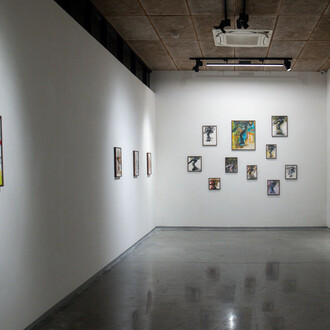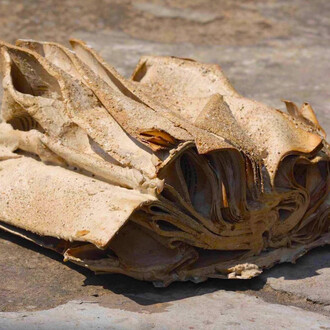Latitude 28 is proud to present The personal is mythical, curated by Bhavna Kakar, a group exhibition featuring new bodies of work by Bhajju Shyam, Neha Sahai, and Viraj Khanna. The personal is mythical examines how contemporary artistic practices in India are engaging with and reorienting the mythic—not as a static or folkloric residue of the past, but as an insurgent mode of storytelling. It serves as a meditation between private memory and collective imagination. Positioned within a long-contested field of cultural production, the exhibition confronts entrenched hierarchies that have historically produced binaries such as “folk” and “high” art, “craft” and “concept,” and the “vernacular” and the “global.” In doing so, it asserts the capacity of myth to function as a living site of knowledge production, shaped by contemporary concerns and rearticulated through diverse artistic languages.
Foregrounding the work of Bhajju Shyam, Neha Sahai, and Viraj Khanna, The personal is mythical resists reductive taxonomies and instead presents an embodied, polyphonic articulation of artistic practice. The exhibition does not propose a homogenous fusion of indigenous and contemporary forms, but rather a strategic engagement with the socio-aesthetic exclusions that have marginalised non-canonical practices within dominant art discourses. It consciously avoids a simplistic celebration of hybridity for its own sake. Instead, it insists that the lineages of image-making in India—whether drawn from tribal, artisanal, or urban contexts—possess both conceptual depth and aesthetic vitality, and that their modes of narration are acts of memory, resistance, and invention.
Bhajju Shyam, a leading figure within the Pardhan Gond tradition, constructs intricate visual cosmologies that honour ancestral knowledge systems while remaining attuned to the exigencies of the present. His work operates simultaneously as preservation and provocation—insisting that oral storytelling and visual inheritance are dynamically evolving rather than fixed in time.
Neha Sahai, by contrast, inhabits a more introspective and surreal terrain, employing watercolour, ink, and oil to depict liminal feminine worlds where memory, stillness, and dream converge. Her reimagined goddesses and moonlit figures defy patriarchal idealisation, asserting instead a tender, radical femininity rooted in embodied poetics and emotional intelligence.
Viraj Khanna’s practice draws from the overlapping domains of textile, performance, and post-pop collage. His use of masks, stitching, and fragmented forms speaks to the constructed nature of identity itself, suggesting that selfhood—like myth—is performative and contested. Khanna interrogates the very notion of the “authentic” as it has been shaped by consumer culture, modernity, and inherited ideologies.
Through these divergent yet dialogic practices, The personal is mythical articulates a curatorial framework that honours difference without instrumentalising it. It refuses to reduce the “traditional” and the “contemporary” into binary oppositions and instead posits the mythic as a critical methodology—one that enables artists to grapple with rupture, reclaim marginalised histories, and forge new iconographies. The exhibition contends that myth, far from being a retreat into fantasy, functions as a grammar for reworlding through memory, resistance, and transformation.
By centering these artistic vocabularies, The personal is mythical offers a powerful counterpoint to hegemonic art histories and affirms the urgency of reclaiming narrative sovereignty within an extractive cultural economy.













